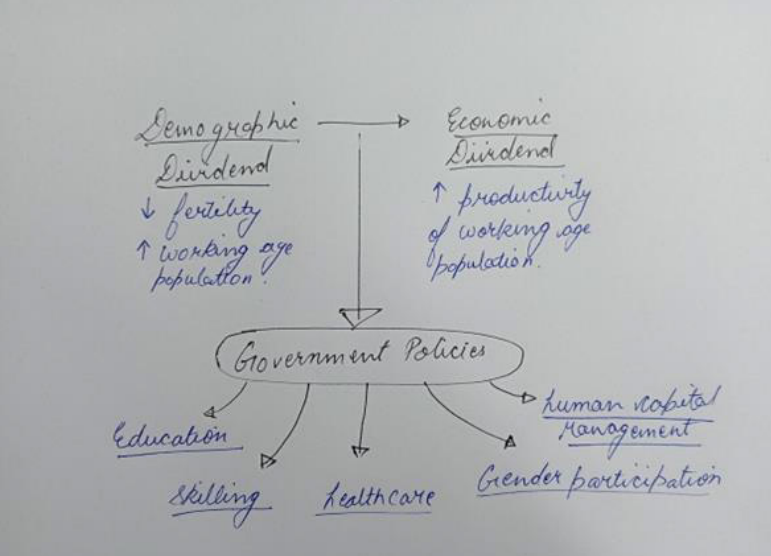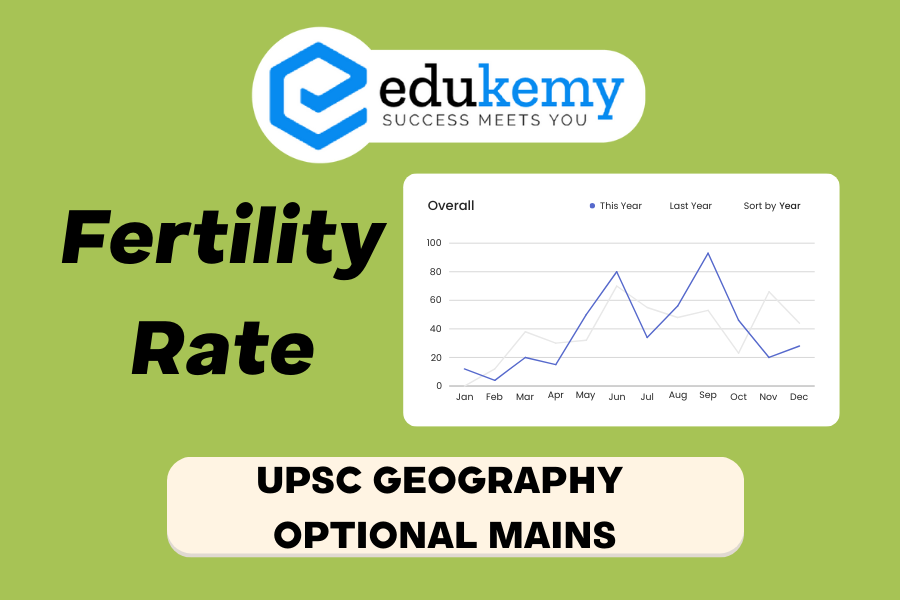
As India grapples with a declining fertility rate and a steadily increasing median age, the nation stands at a critical juncture in harnessing its demographic dividend for economic growth. The demographic dividend, characterized by a larger working-age population relative to dependents, has the potential to drive economic prosperity. However, the evolving demographics pose challenges, necessitating strategic policies and initiatives. India’s ability to translate its demographic dividend into an economic one hinges on innovative approaches to workforce development, education, and healthcare, as well as fostering an environment conducive to entrepreneurship and technological advancement. In navigating this demographic shift, India must strike a delicate balance between capitalizing on the advantages of a youthful population and addressing the emerging needs of an aging society, all while fostering sustainable economic development.
Contents
Answer
The United Nations Population Fund says, With falling fertility (currently 2.0), rising median age (from 24 years in 2011, to 29 years now and expected to be 36 years by 2036), a falling dependency ratio (expected to decrease from 65% to 54% India is in the middle of a demographic transition. This provides a window of opportunity for faster economic growth. Hence, there is an urgency to take appropriate policy measures.

- Educating the youth -. Given that India’s workforce starts at a younger age, a greater focus needs to be on transitioning from secondary education to universal skilling and entrepreneurship, as done in South Korea.
- National education policy – establishment of an Institutional Innovation Council (IIC) in every higher education institution to promote innovation and entrepreneurship among students and faculty.
● School Innovation Council (SIC) -SICs in schools is a step aligned with the vision of the National Education Policy (NEP) 2020 to promote ideation, out-of-box thinking, innovation, and entrepreneurship, at the school education level in a sustainable manner.
● This trend can further encourage the youth to take up entrepreneurship and have reduced
dependence on government jobs which in turn would lead to rapid economic growth. - Skilling – Pradhan Mantri Kaushal VikasYojana (PMKVY)-To empower the country’s youth.
- Jan Shikshan Sansthan (JSS) Scheme-to impart vocational skills in non-formal mode to nonliterate, neo-literates, persons with rudimentary level of education up to 8th and school dropouts up to 12th standard in the age group of 15-45 years. The priority groups are women, SC, ST, minorities, and other backward sections of the society.
- Industrial Training Institutes (ITIs)/ Craftsmen Training Scheme (CTS)-This scheme is for providing long-term training.

- Healthcare investment -The public spending on health has remained flat at around 1% of GDP. (UNFPA).We need to provide universal access to high-quality basic healthcare.
● Mental health focus – Rashtriya Kishor Swasthya Karyakram (RKSK) is a Government of India
policy that deals exclusively with adolescent health.Yuva sampada yojana (only in Karnataka) – address various immediate and underlying factors that affect mental health
● need for feminist approach – priority women’s health as females constitute (53% of all
cancers). live with cancer , poverty , domestic violence , do not get early diagnosis of cancer ,
says New Lancet Commission report. - Increase female workforce participation-. As of 2019, 20.3% of women were working or looking for work, down from 34.1% in 2003-04. Girls need more choices to learn skills ,safe transport to travel to work
● The Code on Social Security, 2020 has the provisions for enhancement in paid maternity leave from 12 weeks to 26 weeks.
● The Code on Wages 2019 has provisions that there shall be no discrimination in an
establishment or any unit thereof among employees on the grounds of gender in matters
relating to wages by the same employer, in respect of the same work or work of similar
nature done by any employee.
● providing training to them through a network of Women’s Industrial Training institutes,
National Vocational Training Institutes and Regional Vocational Training Institutes. - Human capital management – expand manufacturing sector
● Make in India initiative: ‘Make in India’ is an initiative that was launched on 25th September 2014 to facilitate investment, foster innovation, build best-in-class infrastructure, and make India a hub for manufacturing.
● Industrial Corridor Development Programme: To accelerate growth in manufacturing,
Government of India (GoI) has adopted the strategy of developing Industrial Corridors in
partnership with State Governments.
● PM Mega Integrated Textile Region and Apparel (PM MITRA): To have world-class
industrial infrastructure which would attract cutting-edge technology and boost FDI and local
investment in the textiles sector
● “National Handicraft Development Programme (NHDP)” and Comprehensive Handicrafts
Cluster Development Scheme (CHCDS). - Advancement in the agriculture sector – about 65 percent of the people in India are engaged in agriculture and allied activities directly so, advancement in this sector can reap maximum productivity from demographic dividend.
- FARMER SUPPORT – Income support is provided to farmers through the PM KISAN Scheme. insurance is assured through the Pradhan Mantri Fasal Bima Yojana. Under the e-NAM initiative, markets across the length and breadth of the nation are now open to farmers.
- Diversity – horticulture, pisciculture – trout production in J&K, dryland farming -“Rainfed Area Development Programme (RADP), organic farming.
- Dairy – India is the largest producer of milk in the world but not the largest exporter. further advancement needs to be made in this sector to meet international criteria for exports.
The government has already rolled out policies and schemes for boosting skills among the youth, entrepreneurship, etc. However, to make India Self-Reliant, effective implementation is necessary.
In case you still have your doubts, contact us on 9811333901.
For UPSC Prelims Resources, Click here
For Daily Updates and Study Material:
Join our Telegram Channel – Edukemy for IAS
- 1. Learn through Videos – here
- 2. Be Exam Ready by Practicing Daily MCQs – here
- 3. Daily Newsletter – Get all your Current Affairs Covered – here
- 4. Mains Answer Writing Practice – here

